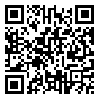Volume 3, Issue 1 (1-2015)
J. Pediatr. Rev 2015, 3(1): 0-0 |
Back to browse issues page
1- Antimicrobial Resistant Nosocomial Infection Research Center, Mazandaran University of Medical Sciences, Sari, IR Iran , avadneg@yahoo.com
2- Antimicrobial Resistant Nosocomial Infection Research Center, Mazandaran University of Medical Sciences, Sari, IR Iran
3- Beatson Institute for Cancer Research, Faculty of Medicine, University of Glasgow, Glasgow, UK
4- Research Institute of Interventional Allergology and Immunology, Bonn, Germany
5- Faculty of Medicine, Mazandaran University of Medical Sciences, Sari, IR Iran
2- Antimicrobial Resistant Nosocomial Infection Research Center, Mazandaran University of Medical Sciences, Sari, IR Iran
3- Beatson Institute for Cancer Research, Faculty of Medicine, University of Glasgow, Glasgow, UK
4- Research Institute of Interventional Allergology and Immunology, Bonn, Germany
5- Faculty of Medicine, Mazandaran University of Medical Sciences, Sari, IR Iran
Abstract: (4243 Views)
Generally, 15-25% of general population experience urticaria during their life. The prevalence of chronic urticaria is about 0.1-0.3% in children and most often occurs between ages of 6-11 years. There are several causes for development of chronic urticaria. Known etiologies of chronic urticaria in children vary from 21% to 83%. Chronic urticaria caused by infections is more common in children than adults. Diagnosis of chronic urticaria is based on clinical history and physical examination and routine laboratory testing in the absence of a clinical history is rarely helpful. Similar to adults, antihistamines are the first line of treatment. Omalizumab as a biological engineering molecule is a recombinant humanized monoclonal antibody, which targets the CH3 domain of the ε chain of the free IgE. Omalizumab has been used in patients with H1-antihistamine-refractory chronic idiopathic urticaria (CIU). Here in we made a review about possible mechanisms by which omalizumab may be effective in children above 12 years with chronic urticaria, and also focused on its therapeutic effects, onset criteria and possible side effects.
Type of Study: Narrative Review |
Received: 2014/04/3 | Accepted: 2014/07/3 | Published: 2015/01/20
Received: 2014/04/3 | Accepted: 2014/07/3 | Published: 2015/01/20
| Rights and permissions | |
 |
This work is licensed under a Creative Commons Attribution-NonCommercial 4.0 International License. |



